Hartford: 1636 to 1900
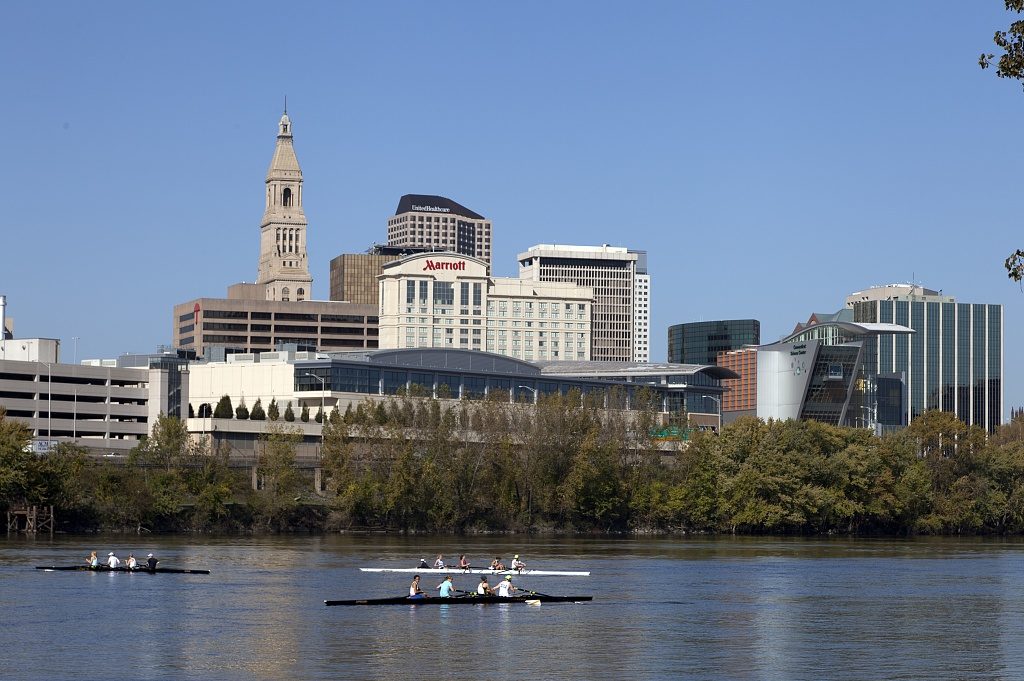
Hartford. Photo: Carol M. Highsmith, Library of Congress
Hartford is the state capital. Like New Haven, Hartford was settled by a minister and his followers. Reverend Thomas Hooker led a group across land. They came from Massachusetts in 1636. They settled on the Connecticut River near a Dutch trading post. Not far away were the English settlements of Windsor and Wethersfield.
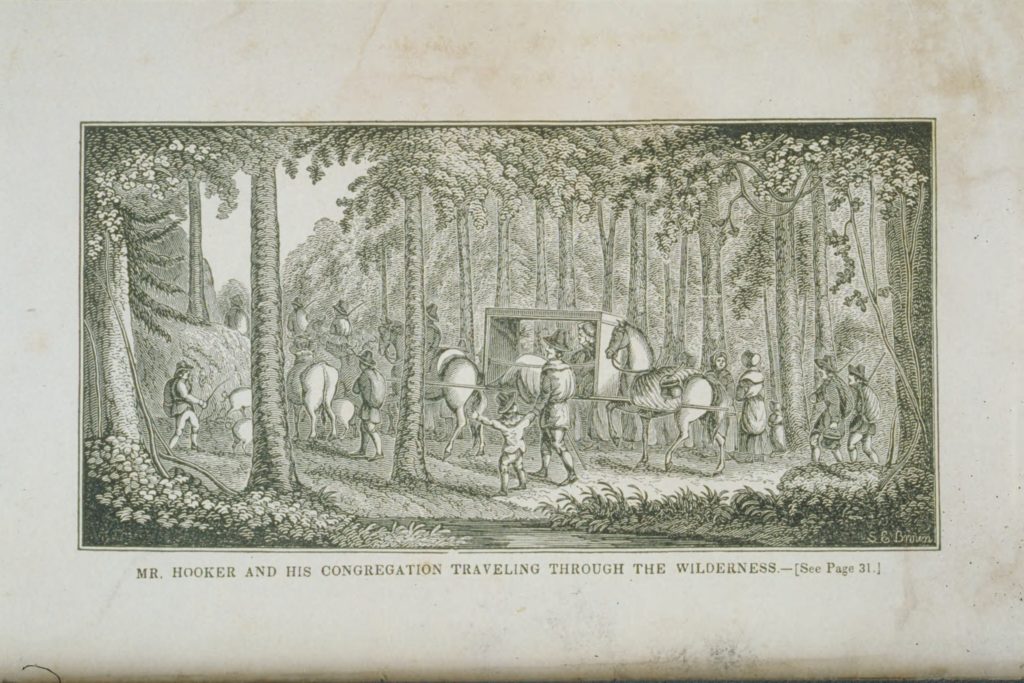
Rev. Hooker and his congregation traveling through the wilderness to found Hartford. Connecticut Historical Society
The Saukiog and Podunk Indians lived in the area. Chief Sequasson sold the land to the settlers. The Indians continued to live nearby. The three “river towns” joined together as the Connecticut Colony.
Hartford’s settlers built farms. Small mills were built along the Little River. A sawmill turned trees into lumber. A gristmill ground grain into flour. A kiln baked bricks from clay dug nearby. A person might be a minister, or a carpenter, or a tailor, but he was a farmer, too.
The New Haven Colony was its neighbor. The two colonies joined together in 1665. For 200 years, Connecticut had two capitals: Hartford and New Haven. The legislature met in each city every other year.
Hartford became a bustling center of river trade. The first wharf was built in 1720. Warehouses and shops lined the riverfront.
The Hartford Courant newspaper was started in Hartford in 1764. It has been published ever since. That makes it the longest-published newspaper in the United States.
Like New Haven, Hartford became a city in 1784. In 1788, George Washington became the nation’s first president. He wore a suit of wool cloth made by the Hartford Woolen Company to his inauguration.
The railroad came to Hartford in 1839. Factories were built to make steam engines, nails, organs, saddles, and more. Hartford became an insurance center. It was also known for book publishing. That’s why the famous author Mark Twain came to live in Hartford. Best-selling author Harriet Beecher Stowe was his neighbor.
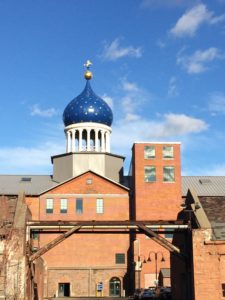
Former Colt’s Patent Firearms. Connecticut Explored
In 1855, Samuel Colt built a large factory along the Connecticut River. His factory became famous for making guns. He built housing for his workers. He topped his factory with a blue dome covered in gold stars. The area will soon be the Coltsville National Historical Park.
Many inventors got their start in the factories. Bicycles, sewing machines, early automobiles, airplanes, and elevators were made in Hartford.
In 1875 Hartford became the capital city. The new capitol building was completed in 1878.
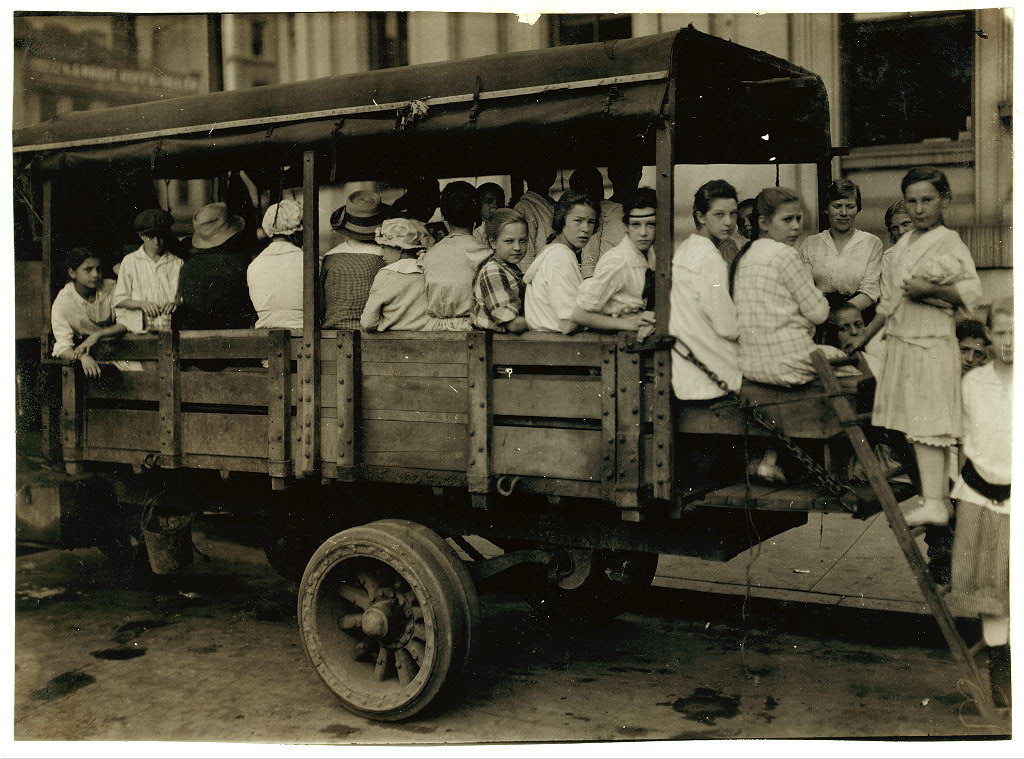
Truck load of tobacco workers, including boys and girls, in downtown Hartford bound for American Sumatra Tobacco Farm, South Windsor, 1917. Photo: Lewis Hine, Library of Congress
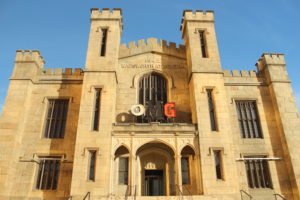
Wadsworth Atheneneum Museum of Art, also the home of the Amistad Center for Art & Culture. Connecticut Explored
Today, Hartford is still an insurance center. Saddles are still made in the city. The Wadsworth Atheneum Museum of Art was founded in 1842. It is said to be the oldest continuously operating art museum in the nation.
In the 20th century a migration of African Americans from the south and the West Indies, and Puerto Ricans brought their culture to Hartford. The Amistad Center for Art & Culture, the Artists Collective, and Guakia are three organizations that celebrate Hartford’s rich culture today.






